Though often overshadowed by notorious male serial killers, female serial killers do exist, defying the stereotype that women only commit quiet, covert murders.
Experts cite childhood abuse, untreated mental illness, past trauma, and greed for money or power as common triggers that lead women to target vulnerable groups as their victims. Whether murdering servants, slaves, elders, children or ill individuals in earlier eras or more recent times, notorious female serial killers exhibit ruthless patterns of violence that contradict gender stereotypes.
To compile a list of the most brutal female serial killers, 24/7 Tempo consulted various sources including Britannica, History, Biography, and Crime Museum. Our list, arranged in reverse chronological order, is based on the frequency and depravity of the murders committed by these women and the impact their crimes had on their community. Only women who were convicted of or were pursued in connection with murders are included.
The tactics used by prolific female serial killers varied widely. Over one-third worked as caregivers, including nurses, nursing assistants, midwives, and Victorian-era “baby farmers” paid to take in unwanted children, which enabled their crimes. Killers such as England’s Amelia Dyer, Amelia Sach, and Annie Walters, as well as Japan’s Miyuki Ishikawa, even ran their own childcare operations, through which they ultimately killed countless infants. (Read about the most brutal female criminals in history.)
Poison proved the weapon of choice for many female serial killers, especially arsenic. Housekeepers Gesche Gottfried and Lydia Trueblood, home nurse Velma Barfield, and the grandmotherly yet sinister Nannie Doss all secretly used toxic homebrews to kill their victims.
Here are history’s most evil female serial killers
Elizabeth Wettlaufer

- Occupation: Nurse
- When crimes were committed: 2007-2016
- Victims: Elderly people
- Method of killing: Lethal doses of insulin
Wettlaufer, who worked as a nurse in Ontario, Canada, murdered elderly patients under her care by injecting them with lethal doses of insulin. Her victims ranged in age from 75 to 96 years. In 2016, she confessed to the serial killings and pleaded guilty to eight counts of first degree murder. She said she killed her patients to relieve stress after arguing with her husband. She pleaded guilty to all charges in 2017 and was sentenced to life in prison
Juana Barraza

- Occupation: Wrestler
- When crimes were committed: 1990s-2000s
- Victims: Elderly women
- Method of killing: Strangulation
Barraza was a Mexican serial killer known as “La Mataviejitas” (The Old Lady Killer). She murdered at least 10 elderly women in Mexico City. The former professional wrestler would gain access to their homes by posing as a government social worker, then rob them and strangle them to death. In 2008, Barraza was convicted and sentenced to 759 years in prison for her crimes.
Aileen Wuornos

- Occupation: Sex worker
- When crimes were committed: 1989-1990
- Victims: Men
- Method of killing: Shooting
Wuornos was a serial killer who murdered seven men in Florida in two years. She worked as a prostitute and claimed she shot her victims in self-defense after they attempted to sexually assault or rape her. In 1992, Wuornos confessed to the murders and was sentenced to death. She was executed by lethal injection in 2002 at age 46. Wuornos’ case inspired the 2003 film “Monster” starring Charlize Theron. as Wuornos.
Beverley Allitt
- Occupation: Nurse
- When crimes were committed: 1990s
- Victims: Sick children
- Method of killing: Lethal doses of insulin
Allitt was an English serial killer, known as the “Angel of Death,” who murdered four children and injured nine others while working as a nurse in Lincolnshire. Allitt injected the children with large doses of insulin or air bubbles intravenously, causing cardiac arrest. Her victims were all under the age of 8. In 1993, she was sentenced to 13 life sentences for the murders. Allitt was diagnosed with Munchausen syndrome by proxy, a psychological disorder in which somebody fabricates or induces symptoms of illness in themselves.
Sara María Aldrete
- Occupation: Drug dealer and religious cult leader
- When crimes were committed: 1980s
- Victims: Drug dealers and others
- Method of killing: Various
Aldrete was a member of a cult called “Los Narcosatánicos” in Matamoros, Mexico. She participated in several murders, torture sessions, and rituals with the cult, which was involved in drug trafficking. She got away with her crimes until 1990 when she received a six-year sentence for criminal association. A subsequent trial earned her 30 more years in prison for several murders. She has also been implicated in the kidnapping and murder of a student tourist from Texas named Mark Kilroy and will face charges for the crime upon her release.
Gwendolyn Graham and Catherine Wood
- Occupation: Nurse’s aides
- When crimes were committed: 1980s
- Victims: Elderly women
- Method of killing: Suffocation
Graham and Wood were lovers who worked together as nurses at the Alpine Manor Psychiatric Hospital in Michigan in the 1980s. Between 1987 and 1988 they murdered five elderly women patients by suffocating them with washcloths, initially targeting patients whose initials would spell the word “murder.” In 1989, after Wood confessed their crimes to her ex-husband, they were charged with the murders. Graham received five life sentences in prison, while Wood was convicted of second-degree murder and received 20 to 40 years, but has since been paroled.
Dorothea Puente

- Occupation: Nurse’s aide
- When crimes were committed: 1980s
- Victims: Elderly and disabled
- Method of killing: Poison
Puente was an American serial killer who murdered at least nine elderly and mentally disabled people in her Sacramento boarding house between 1982 and 1989. She cashed their Social Security checks after killing them and burying their bodies on the property. In 1993, Puente was convicted of three murders and sentenced to life in prison without possibility of parole. She died incarcerated in 2011 at age 82.
Margie Velma Barfield
- Occupation: Home nurse
- When crimes were committed: 1969-1978
- Victims: Loved ones
- Method of killing: Arson (?) and poison
Barfield poisoned at least five people in North Carolina, including her fiancé and one of her husbands (another died in a fire of suspicious origin). A drug user, she claimed she killed her victims so they wouldn’t reveal that she’d stolen money from them to support her habit. Though she confessed to five murders, she was convicted of only one and sentenced to death. She died by lethal injection in 1984 at the age of 52, the first woman executed in the U.S. after the death penalty was reinstated in 1976.
Genene Jones
- Occupation: Nurse
- When crimes were committed: 1970s-1980s
- Victims: Babies and children
- Method of killing: Drug overdoses
A pediatric nurse in Texas in the early 1980s, Jones injected children under her care with drugs, including heparin (a blood thinner) and succinylcholine (a muscle relaxant) to induce medical emergencies. This allowed Jones to revive the children and appear as a hero. However, many apparently died from her actions – perhaps as many as 60 according to one district attorney. In 1984, she was convicted of murdering one child and injuring another, receiving a 99-year sentence, and will be eligible for parole in 2038.
Judias Buenoano

- Occupation: Nursing Assistant
- When crimes were committed: 1971-1983
- Victims: Loved ones
- Method of killing: Poisoning and drowning
Buenoano was dubbed the “Black Widow Killer” for murdering her husband, boyfriend, and son in Florida in the 1970s and ’80s, poisoning them with arsenic for their life insurance money. Buenoano was also accused of attempting to kill her fiancé with a car bomb after an attempt to poison him failed. In 1984, she was convicted of murdering her son and the attempt on her fiancé‘s life, and the following year was convicted of killing her husband. Her son’s murder earned her a death sentence, and she was electrocuted in 1998 – the first woman executed in Florida since 1848.
Marybeth Tinning

- Occupation: Waitress and school bus driver
- When crimes were committed: 1972-1985
- Victims: Her children
- Method of killing: Poisoning and smothering
A serial killer from New York, Tinning was suspected of having killed her nine children over 13 years. She said she could not cope with the crying. Tinning continued to have children after the initial deaths, claiming the latter died of natural causes like sudden infant death syndrome. Suspicion grew after the death of her 4-month-old daughter in 1985. Though she confessed to two other slayings, she was convicted only of that murder and sentenced to 20 years to life in prison. She was paroled in 2018.
Rosemary West

- Occupation: Sex worker
- When crimes were committed: 1971-1987
- Victims: Young women and girls
- Method of killing: Torture
West was a British serial killer who, along with her husband, Fred, raped and murdered at least 10 young women and girls in Gloucester. After being sexually assaulted, the victims were tortured before being killed, dismembered, and buried in the couple’s cellar. The two were arrested in 1992. Two years later, while awaiting trial, Fred hung himself in jail In 1995, West was convicted of 10 murders and sentenced to life in prison without the possibility of parole.
Myra Hindley
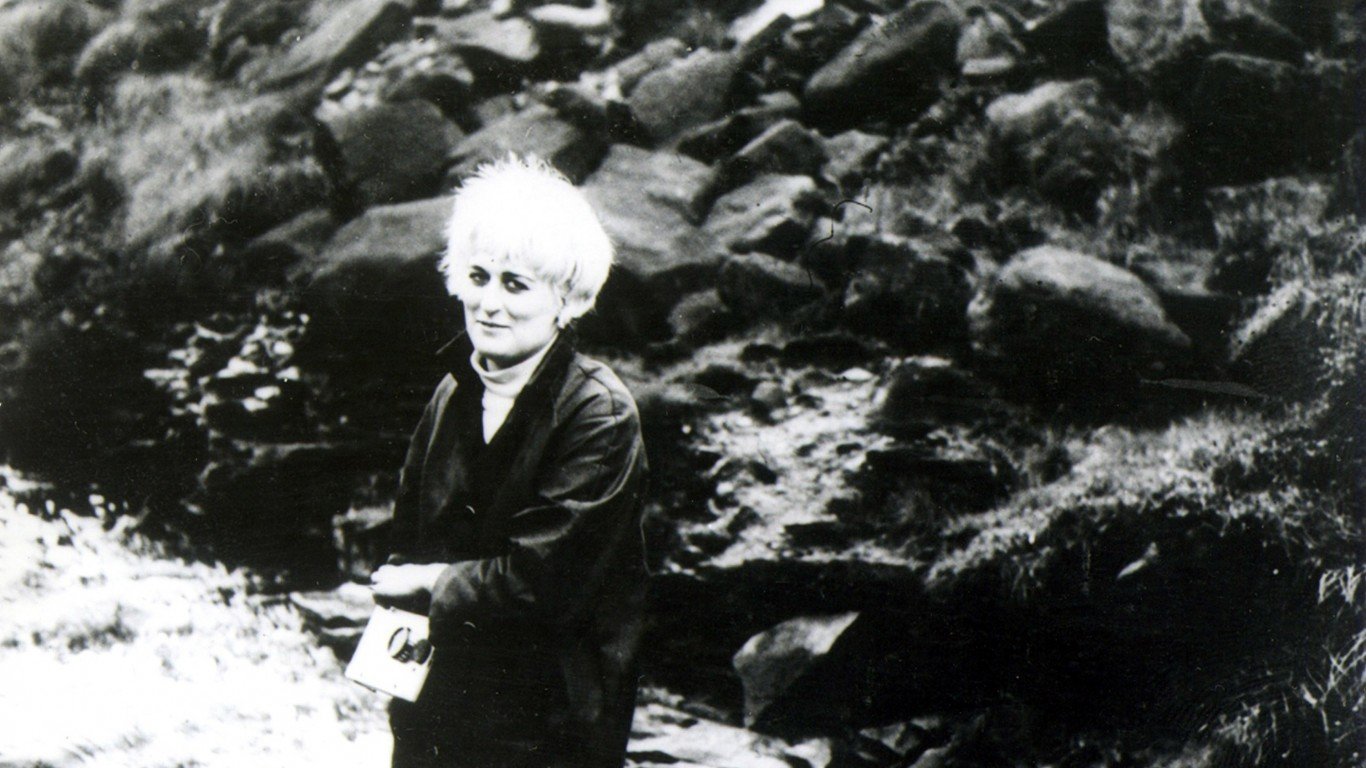
- Occupation: Clerk
- When crimes were committed: 1963-1965
- Victims: Children and teenagers
- Method of killing: Various
Along with her boyfriend, Ian Brady, Hindley committed the notorious “Moors Murders” in England, in which five children aged 10 to 17 were lured with offers of a ride or a job, then sexually assaulted (in at least four cases) and brutally killed by strangulation, with a knife, or in one instance with an ax. In 1966, both were convicted of three murders and sentenced to life in prison. They both died while incarcerated – Hindley in 2002 after serving 36 years, Brady in 2017 after 51 years in jail.
Delfina and María De Jesús González
- Occupation: Leaders of a prostitution ring
- When crimes were committed: 1950s-1960s
- Victims: Sex workers and clients
- Method of killing: Drug overdoses
Delfina González and her sister María De Jesús were Mexican serial killers known as “Las Poquianchis” (the origin of the term is disputed) who operated a brothel and may have murdered at least 91 but perhaps as many as 150 women and a handful of men in Guanajuato state in the 1950s. They recruited prostitutes with the promise of work, then forced them into servitude, killing those who resisted or who became ill or stopped pleasing customers. The sisters were arrested in 1964 and found guilty of the murder of 11 women. Both received prison sentences of 40 years. Delfina died in prison and her sister completed her sentence and was released.
Miyuki Ishikawa
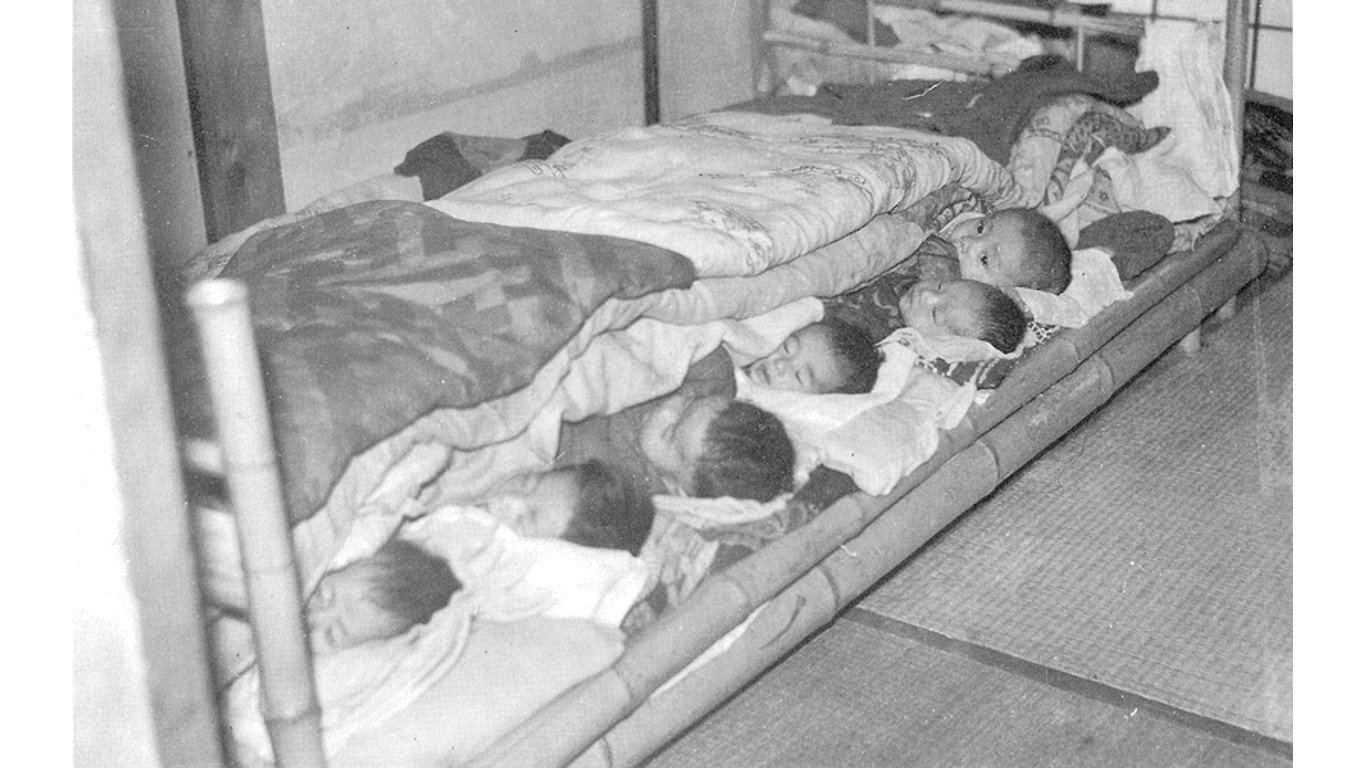
- Occupation: Midwife
- When crimes were committed: 1940s
- Victims: Babies
- Method of killing: Poisoning and starving
Ishikawa was a Japanese midwife who, with several accomplices – including her husband – murdered at least 103 infants while working at a maternity hospital in Tokyo after World War II, killing them with poison or through neglect by not feeding them. The murders were intended to free up hospital resources, and authorities turned a blind eye. The couple was only convicted of five deaths. Ishikawa was given an eight-year sentence, reduced to four years, while her husband served only two years in prison.
Nannie Doss
- Occupation: Cotton mill worker
- When crimes were committed: 1920s-1950s
- Victims: Relatives
- Method of killing: Various
Known as the “Giggling Granny,” Doss was a serial killer who murdered 11 people, including four husbands, two of her children, and two of her grandchildren, her mother, her sister, and her mother-in-law. She used various methods to kill, including poisoning and asphyxiation. In 1955, Doss confessed to the murders after an autopsy found arsenic in her last husband’s body. She was sentenced to life in prison and died there of leukemia in 1965 at age 59.
Lyda Trueblood

- Occupation: Housekeeper
- When crimes were committed: 1915-1920
- Victims: Relatives
- Method of killing: Poisoning
One of Idaho’s worst serial killers, Trueblood, also known as Lyda Southard, dispatched as many as six people with arsenic derived from flypaper, including four husbands, her brother-in-law, and her daughter. Trueblood, who profited from some of the deaths through life insurance policies or inheritance money, gained the nicknames “Damsel of Death” and “Lady Bluebeard” for her crimes. She was convicted of murdering one of her husbands and sentenced to 10 years to life in Idaho in 1921. She escaped, was returned to prison a year later, and was released on probation in 1941. She died of a heart attack in 1958.
Kristen Gilbert

- Occupation: Nurse
- When crimes were committed: 1990s
- Victims: Patients
- Method of killing: Overdoses
A nurse in Massachusetts, Gilbert killed at least four patients at the Northampton VA Medical Center where she worked by injecting them with epinephrine, a synthetic version of adrenaline, causing fatal heart attacks. Gilbert also attempted to kill two other patients. Her motive was to gain attention from her lover, who also worked there. She was caught after a review of cardiac events at the hospital. In 2001, Gilbert was convicted of three counts of first-degree murder, one count of second-degree murder, and two counts of attempted murder, and sentenced to four consecutive life sentences without the possibility of parole.
Belle Gunness

- Occupation: Domestic servant and butcher
- When crimes were committed: 1884-1908
- Victims: Men (and her children)
- Method of killing: Poisoning and blunt force
Gunness was a Norwegian-American woman who murdered two husbands for their life insurance plus multiple suitors she’d met through a lovelorn column, as well as several of her adopted or foster children. She killed victims on her Indiana farm and dismembered and incinerated their bodies. After her farmhouse burned down in 1908, authorities found headless corpses on the property but Gunness had disappeared and was never heard from again. She was officially blamed for 40 murders but possibly killed more than 100.
Amy Archer-Gilligan
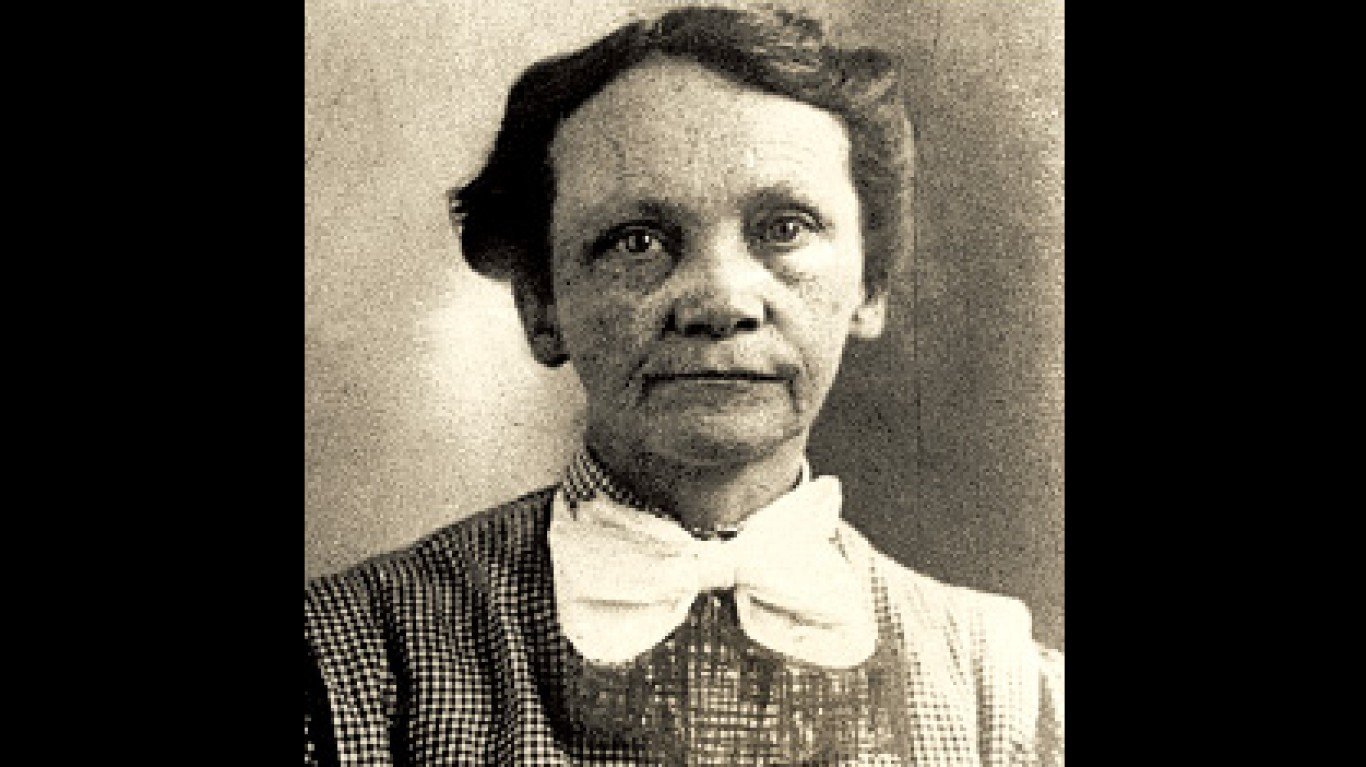
- Occupation: Nurse
- When crimes were committed: Early 1900s
- Victims: Elderly men
- Method of killing: Poisoning
Between 1908 and 1916, 60 residents died at Archer-Gilligan’s nursing home in Connecticut, after giving her money. One, Franklin Andrews, passed suddenly after gardening in 1914. His sister suspected foul play and reported her suspicions to the press, sparking an investigation. Exhumations revealed that at least five men, including Andrews, had been poisoned with arsenic or strychnine. Archer-Gilligan was convicted of first-degree murder in 1917 and sentenced to death, but her lawyer appealed and she was granted a new trial. This time, she was found guilty of second-degree murder and sentenced to life imprisonment. In 1924, she was transferred to a hospital for the criminally insane, where she died in 1962. Her story was reportedly the inspiration for the classic play and movie “Arsenic and Old Lace.”
Jane Toppan
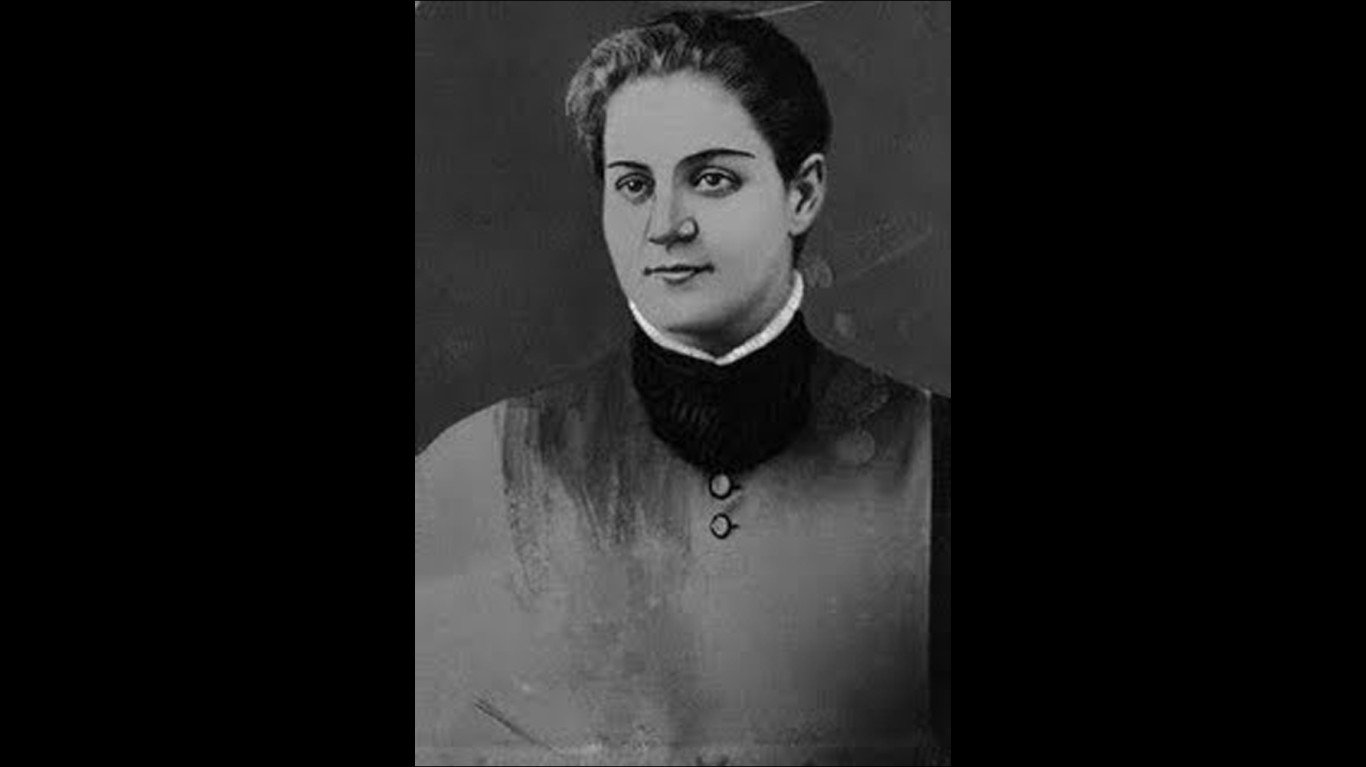
- Occupation: Nurse
- When crimes were committed: 1880-1901
- Victims: Random
- Method of killing: Overdoses
As a nurse at Cambridge Hospital, Toppan – born Honora Kelley – used her profession to kill people. Her victims, mostly patients under her care, fell prey to her lethal doses of drugs. With a twisted obsession for witnessing their suffering, she derived pleasure from causing their deaths. She was caught after killing an entire family with morphine and atropine. Dubbed “Jolly Jane,” she has sometimes been called America’s first female serial killer (though there’s at least one other claimant to that dubious honor; see below). Toppan confessed to the murders of at least 31 people, though some speculate the actual number to have been much higher. Toppan was eventually apprehended in 1901 and confined to a mental institution, where she died in 1938.
Delphine LaLaurie
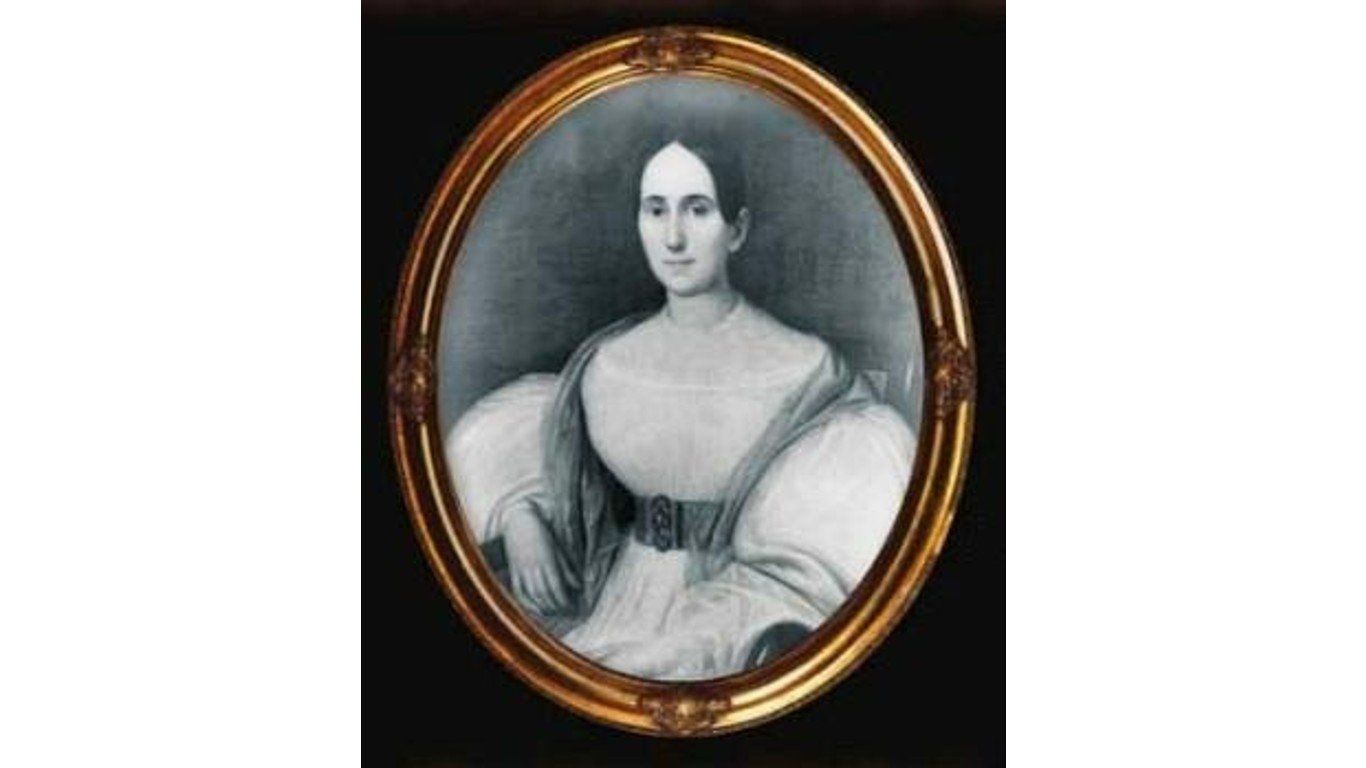
- Occupation: Socialite
- When crimes were committed: 1800s
- Victims: Slaves
- Method of killing: Torture and hanging
LaLaurie, a wealthy New Orleans socialite in the early 19th century, sadistically tortured and abused the enslaved people in her household. When a fire broke out at her mansion in 1834, authorities discovered a horrifying chamber of maltreated and mutilated enslaved men and women, some of them hanging by the neck. This exposed LaLaurie’s sadistic nature and triggered public outrage, and a mob attacked her mansion. However, she managed to escape punishment by fleeing the city, and her fate is unknown.
Amelia Dyer
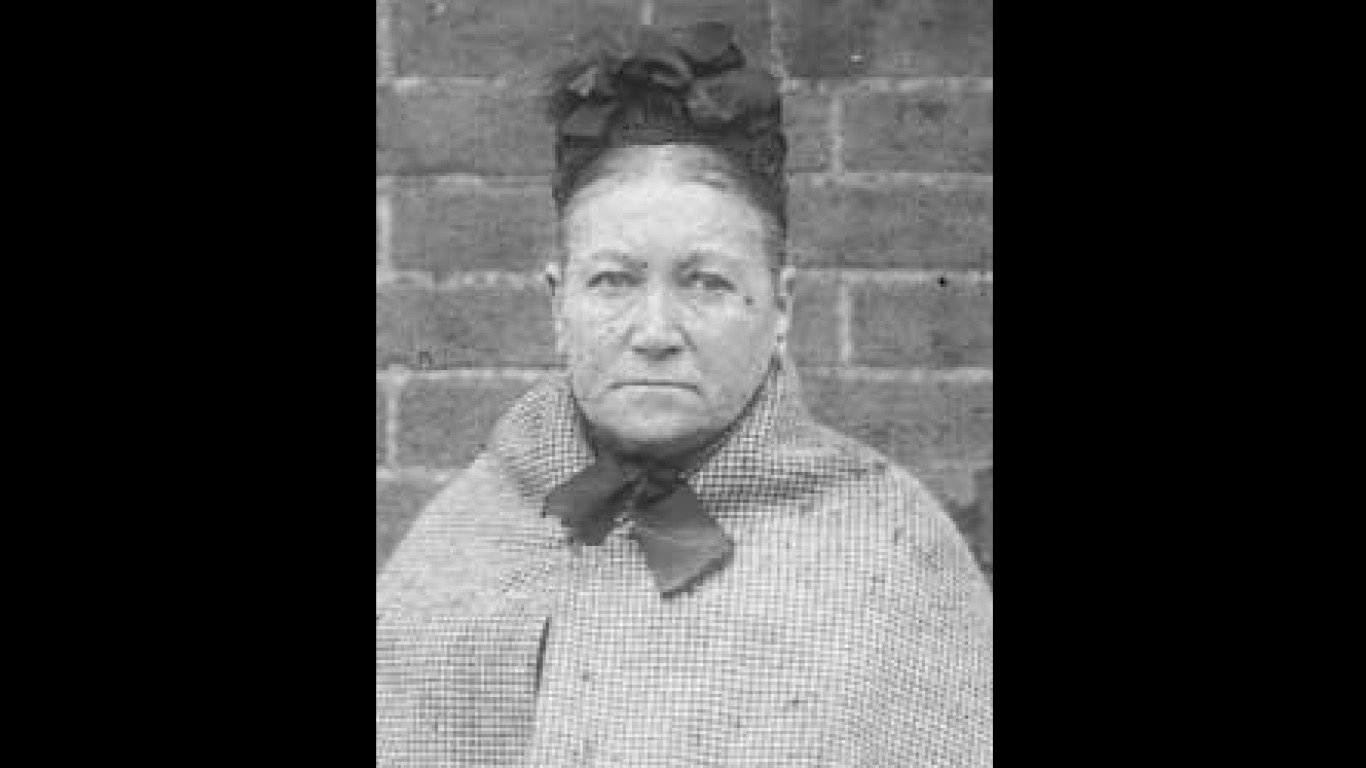
- Occupation: “Baby farmer”
- When crimes were committed: Late 1800s
- Victims: Babies
- Method of killing: Overdoses, strangulation, starvation
Dyer was a Victorian-era British baby farmer – a woman who took custody of unwanted children or those whose parents could no longer provide for them. She appeared as a caring and compassionate figure to desperate mothers, while in reality, she callously murdered hundreds of infants entrusted to her care. Her sinister motives unraveled when an infant’s body was recovered from the Thames wrapped in a package bearing the name of one of her aliases. In 1896, she was arrested, tried, found guilty of multiple murders, and hanged. Dyer is one of history’s most prolific child killers.
Amelia Sach and Annie Walters
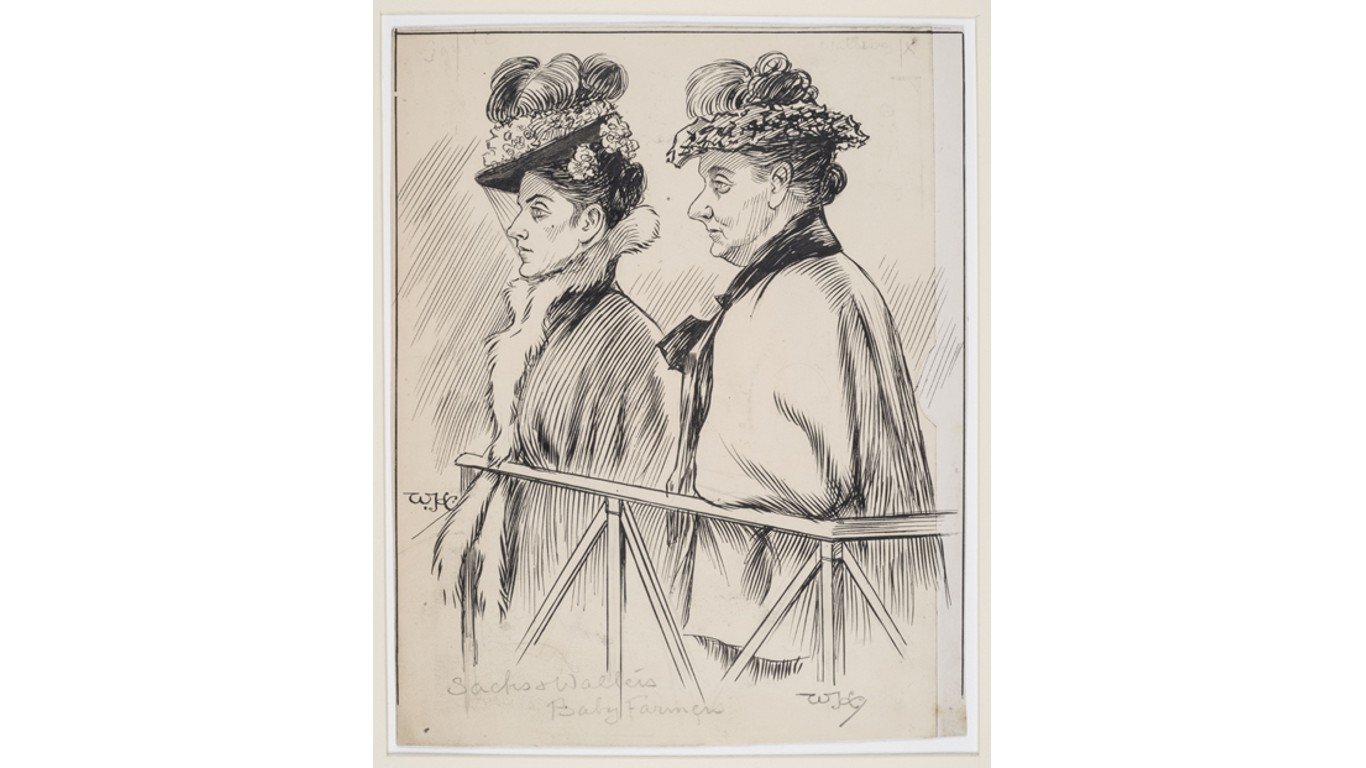
- Occupation: Midwife and sick nurse
- When crimes were committed: Late 1800s
- Victims: Babies
- Method of killing: Poisoning
Known as the Finchley Baby Farmers, Sach and Walters, operated in London. Their scheme involved collecting money from desperate mothers who entrusted their unwanted babies to their care, then killing the infants with chlorodyne, which contained morphine. Their landlord became suspicious and alerted police, and they were arrested in 1903, tried, and hanged. They may have killed as many as a dozen babies.
Mary Ann Cotton
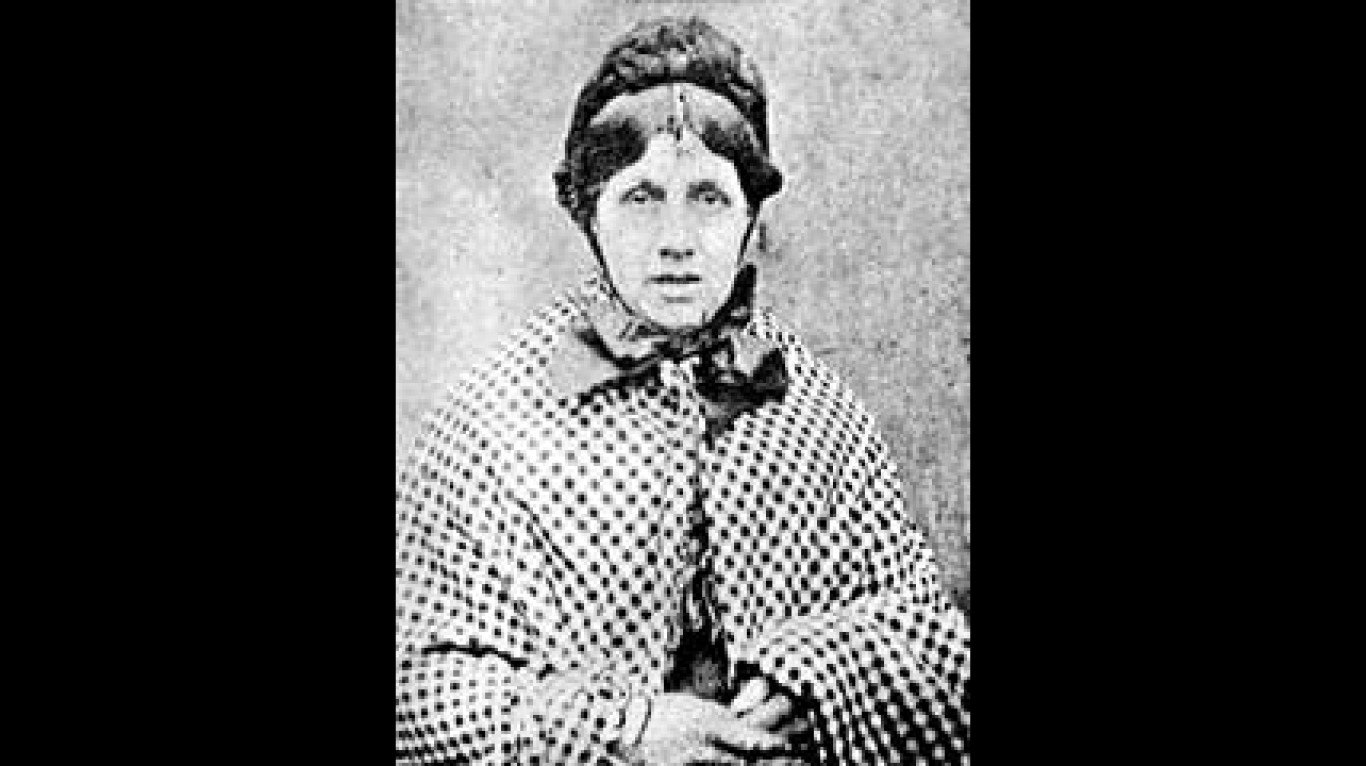
- Occupation: Nurse and housekeeper
- When crimes were committed: Mid-1800s
- Victims: Children and husbands
- Method of killing: Poisoning
Cotton killed her family members and lovers for financial gain, over the years poisoning husbands, suitors, and several of her children with arsenic, resulting in a death toll that may have exceeded 20 victims. Eventually caught and put on trial in 1873, she never confessed but was convicted and hanged.
Maria Swanenburg

- Occupation: Housewife
- When crimes were committed: Mid-1800s
- Victims: Neighbors and family members
- Method of killing: Poisoning
Nineteenth-century Dutch serial killer Swanenburg gained the trust of her community as a caring and helpful neighbor – meanwhile secretly poisoning many people, including her mother, father, and brother-in-law, as well as others who lived in her neighborhood in Leiden. Over several years, she used various lethal substances, possibly claiming as many as 100 victims. Her motives were often financial, seeking to benefit from life insurance payouts and inheritances. Arrested in 1883, she was found guilty of three murders in 1885 and imprisoned for life in a correctional institution, where she died in 1915.
Gesche Gottfried
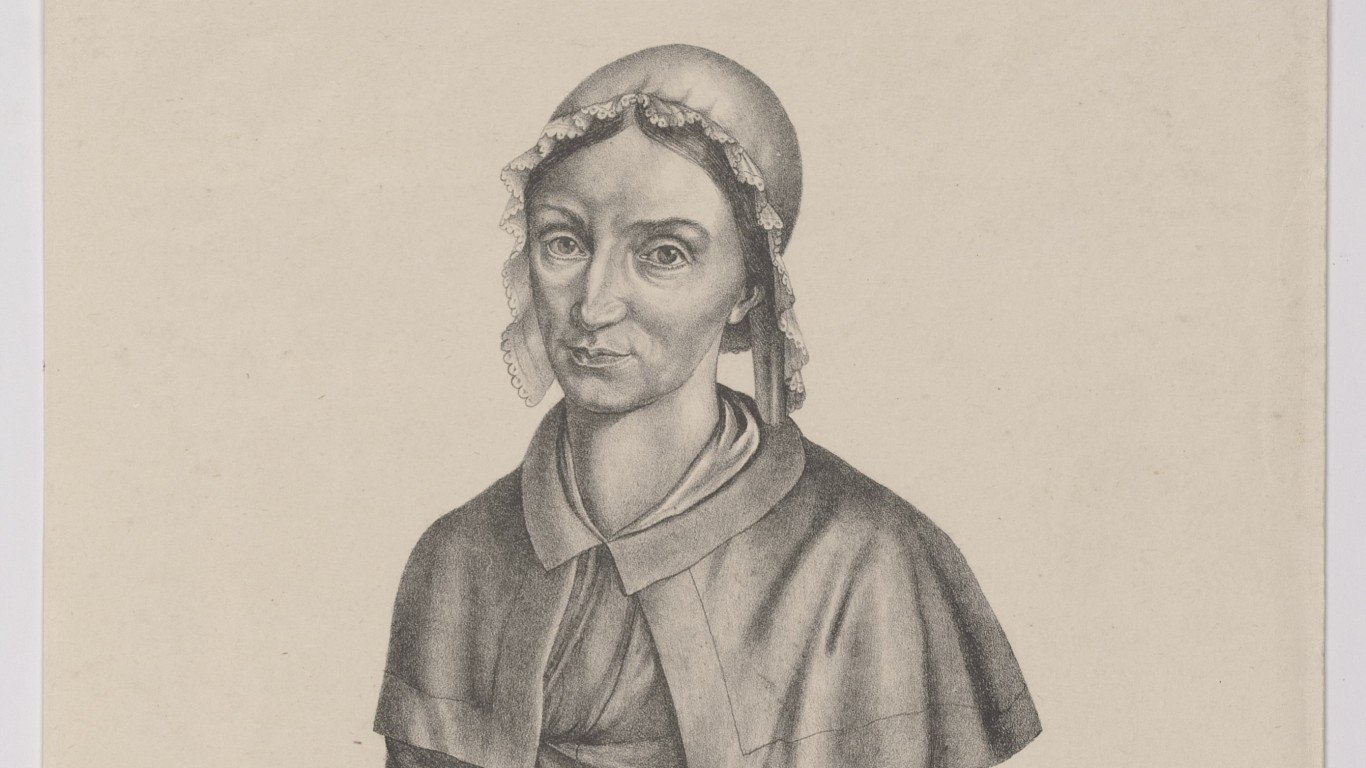
- Occupation: Housekeeper
- When crimes were committed: Early 1800s
- Victims: Relatives
- Method of killing: Poisoning
Gottfried, infamously known as the “Angel of Bremen,” was a 19th-century German serial killer. Motivated by the possibility of financial gain, she poisoned her family members, friends, and lovers with rat poison containing arsenic. Over a period of 15 years, she killed at least 15 people, including her parents, two husbands, and her children. Some speculate she was afflicted with Munchausen’s syndrome by proxy, where sufferers make up or exaggerate illnesses in the people they care for. In 1831, her crimes were discovered, and she was arrested, tried, and the last person to be publicly beheaded in Bremen.
Darya Nikolayevna Saltykova
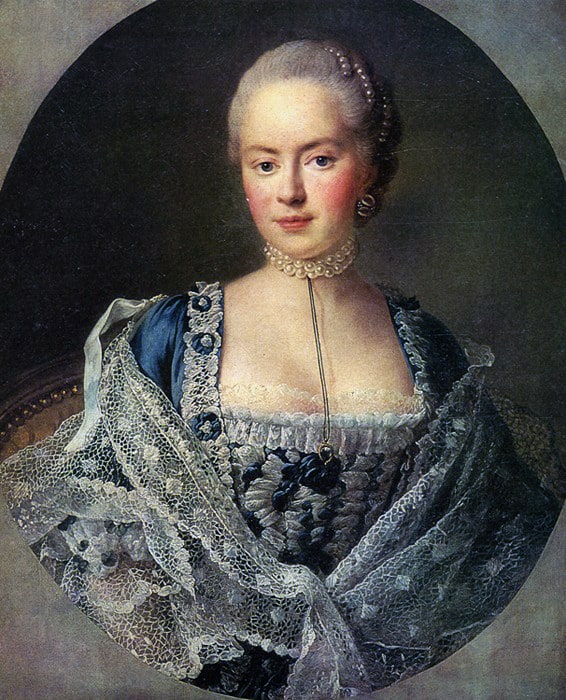
- Occupation: Noblewoman
- When crimes were committed: 1756-1762
- Victims: Girls and young women
- Method of killing: Beating, torture
Saltykova, also known as “The Black Widow of Russia,” was a ruthless Russian noblewoman who used her position to torture, mutilate, and murder hundreds of her serfs – sustenance laborers – most of them female. Her acts of cruelty included extreme physical abuse, starvation, and even boiling her victims alive. For nearly 20 years, she inflicted terror upon those under her control, earning her the title of one of history’s most sadistic female killers. In 1762, she was arrested, and in 1768, after a long and painstaking investigation, she was tried and found guilty of 38 torture murders. She was sentenced to life imprisonment in a convent cellar and died in 1801.
Elizabeth Báthory

- Occupation: Noblewoman
- When crimes were committed: 1590-1610
- Victims: Young women and girls
- Method of killing: Beating, torture
Báthory, a Hungarian countess, was one of history’s most prolific female serial killers. She lured peasant girls to her castle with the promise of work and education, only to subject them to acts of torture, cruelty, and murder. Báthory‘s thirst for blood led her to believe that bathing in the blood of virgins would preserve her youth and beauty. Historians estimate that she may have killed hundreds of victims over several decades. In 1610, she was arrested and tried but never formally convicted. Instead, she was sequestered in a set of rooms, where she stayed until she died in 1614.







